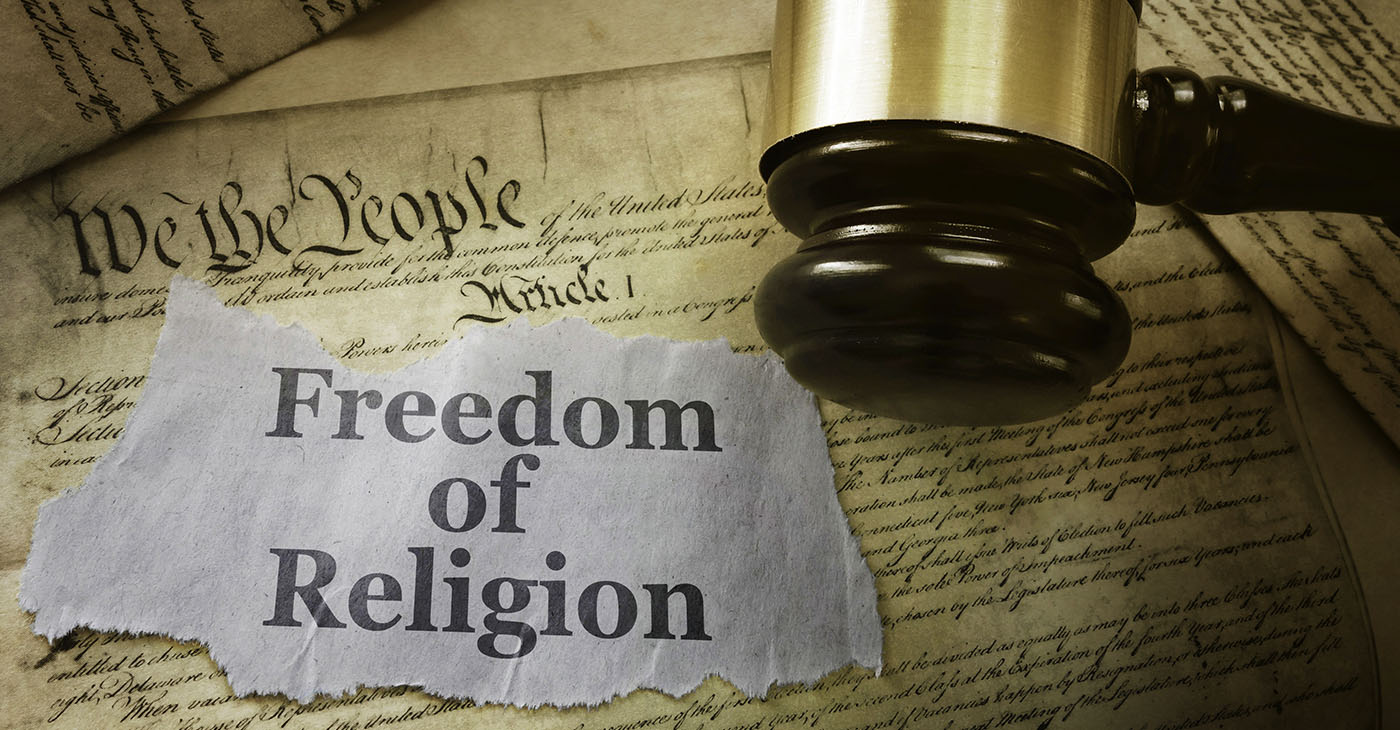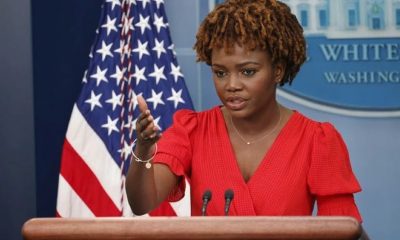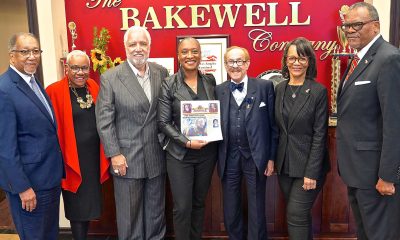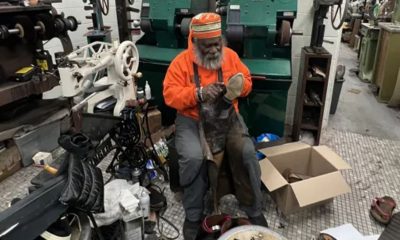Black History
COMMENTARY: Is Religious Freedom Free?
In 2019, a federal appeals court ruled that the school board in Washington State was correct when it fired Coach Joe Kennedy for praying publicly. A judge of the Ninth Circuit said, “A coach’s duty to serve as a good role model requires the coach to refrain from any manifestation of religious faith — even when the coach is plainly not on duty.” Where does freedom start and stop? Kennedy’s case has sparked controversy, landing in the Supreme Court this past week debating just how far can a person express religious freedom in public spaces.

By Rev. Dr. Martha C. Taylor, The Oakland Post
The late Fannie Lou Hamer said, “If I am truly free, who can tell me how much of my freedom I can have today?” That is the question that The United States Supreme Court wrestled with last week in the case of Joe Kennedy, who was fired by the school board in Washington State for praying at the 50-yard line after the high school football game ended.
Kennedy defended his position saying the school board violated his rights to free speech and the freedom to exercise his religion. Kennedy, a Christian, said he felt compelled to give thanks through a silent prayer at the conclusion of each game.
In 2019, a federal appeals court ruled that the school board in Washington State was correct when it fired Coach Joe Kennedy for praying publicly. A judge of the Ninth Circuit said, “A coach’s duty to serve as a good role model requires the coach to refrain from any manifestation of religious faith — even when the coach is plainly not on duty.”
Where does freedom start and stop? Kennedy’s case has sparked controversy, landing in the Supreme Court this past week debating just how far can a person express religious freedom in public spaces.
On June 25, 1962, the Supreme Court decided that praying in schools violated the First Amendment by constituting an establishment of religion. The following year, the Court disallowed Bible readings in public schools for similar reasons.
Long before the Supreme Court’s ruling in 1962 and the current Kennedy case, we are reminded of a very dark period in U.S. history; it was legal that enslaved Africans were forbidden to express religious freedom in any form including reading, writing and praying.
The late Dr. Albert J. Raboteau, an African American scholar, gave meaning to what Africans had to endure to worship. The hush harbors, known as the invisible church, was a secret worship place built with tree branches in the deep woods out of ear shot and eyesight of slave masters. The secret call to worship used codes. One such code was the spiritual, “Steal Away to Jesus.” If enslaved Africans were caught worshiping, they were subjected to vicious beatings or could be murdered for exercising religious freedom.
During the secret worship, the African preacher sermonized how God delivered the Hebrews from slavery to freedom. The ancestors believed and trusted that the same God who told Moses to go down in Egypt land and let my people go was the same God that was going to set them free. The enslaved Africans practiced their African rituals knowing the spirit of the ancestors was with them, encouraging them, that slavery was not their destiny. C. Eric Lincoln reminded us in the epic book “The Black Church in the African American Experience,” that “The term ‘freedom’ has found a deep religious resonance in the lives and hopes of African Americans.”
Colin Kaepernick refused to stand for the Star-Spangled Banner, National Anthem. He said he did so to protest police shootings of African American men and other social injustices faced by Black people in the United States. The Star-Spangled Banner is a lyrical prayer – “and this be our motto, “In God we trust.”
Kaepernick was punished for expressing his freedom by refusing to engage in what he sees as hypocrisy. Is it time for a new national anthem? Near the Rotunda of the Capitol, a room is set apart for prayer. In light of the controversy, should the prayer room be removed? In 2009, I gave the opening prayer as a Guest Chaplain for the U.S. House of Representatives that was aired on CNN and other networks.
Is the opening prayer possibly up for elimination? On April 17, 1952, President Harry Truman signed a bill proclaiming the National Day of Prayer into law in the United States. Will it be reversed? Tim Tebow often knelt and prayed at football games. Steph Curry has a line of tennis shoes with a biblical scripture, “I can do all things…”
Ms. Hamer raised a critical inquiry, how much of my freedom can I have today? Are you willing to contend for your faith?
Activism
Oakland Post: Week of April 17 – 23, 2024
The printed Weekly Edition of the Oakland Post: Week of April 17 – 23, 2024

To enlarge your view of this issue, use the slider, magnifying glass icon or full page icon in the lower right corner of the browser window. ![]()
Black History
Matthew Henson: Explorer Extraordinaire
Matthew Henson, a trailblazing explorer who overcame countless obstacles to leave an incredible mark on history. Born on August 8, 1866, in Charles County, Maryland, his journey is a testament to the power of determination and the spirit of adventure.

By Tamara Shiloh
Matthew Henson, a trailblazing explorer who overcame countless obstacles to leave an incredible mark on history. Born on August 8, 1866, in Charles County, Maryland, his journey is a testament to the power of determination and the spirit of adventure.
Henson’s life began amidst the backdrop of post-Civil War America, where opportunities for African Americans were scarce. From a young age, he possessed an insatiable curiosity about the world beyond his small town. At the age of 12, he embarked on a journey that would change the course of his life forever when he joined a merchant ship as a cabin boy.
His most famous expedition was his journey to the Arctic with renowned explorer Robert E. Peary. In 1887, Henson joined Peary’s crew as a seaman and quickly proved himself to be invaluable with his skills as a navigator and craftsman. Over the course of several expeditions, Matthew endured extreme cold, treacherous terrain, and grueling conditions as he and Peary sought to reach the elusive North Pole.
In 1908–09, Peary set out on his eighth attempt to reach the North Pole. It was a big expedition, with Peary planning to leave supplies along the way. When he and Henson boarded their ship, the Roosevelt, leaving Greenland on August 18, 1909, they were joined by a large group. This included 22 Inuit men, 17 Inuit women, 10 children, 246 dogs, 70 tons of whale meat, blubber from 50 walruses, hunting gear, and tons of coal.
In February, Henson and Peary left their anchored ship at Ellesmere Island’s Cape Sheridan, along with the Inuit men and 130 dogs. They worked together to set up a trail and supplies along the way to the Pole.
Peary picked Henson and four Inuit people to join him in the final push to the Pole. However, before they reached their destination, Peary couldn’t walk anymore and had to ride in a dog sled. He sent Henson ahead to scout the way. In a later interview with a newspaper, Henson recalled being in the lead and realizing they had gone too far. The group turned back, and Henson noticed his footprints helped guide them to their destination. At that location, Henson planted the American flag.
Henson’s legacy extends far beyond his expeditions to the Arctic. He shattered racial barriers in the world of exploration and inspired countless individuals, regardless of race, to dream big and pursue their passions. In 1937, he was finally recognized for his achievements when he was inducted into The Explorers Club, an organization dedicated to promoting scientific exploration and field research.
Matthew Henson died in the Bronx, New York, on March 9, 1955, at the age of 88.
Art
Marin County: A Snapshot of California’s Black History Is on Display
The Marin County Office of Education, located at 1111 Las Gallinas Ave in San Rafael, will host the extraordinary exhibit, “The Legacy of Marin City: A California Black History Story (1942-1960),” from Feb. 1 to May 31, 2024. The interactive, historical, and immersive exhibit featuring memorabilia from Black shipyard workers who migrated from the South to the West Coast to work at the Marinship shipyard will provide an enriching experience for students and school staff. Community organizations will also be invited to tour the exhibit.

By Post Staff
The Marin County Office of Education, located at 1111 Las Gallinas Ave in San Rafael, will host the extraordinary exhibit, “The Legacy of Marin City: A California Black History Story (1942-1960),” from Feb. 1 to May 31, 2024.
The interactive, historical, and immersive exhibit featuring memorabilia from Black shipyard workers who migrated from the South to the West Coast to work at the Marinship shipyard will provide an enriching experience for students and school staff. Community organizations will also be invited to tour the exhibit.
All will have the opportunity to visit and be guided by its curator Felecia Gaston.
The exhibit will include photographs, articles and artifacts about the Black experience in Marin City from 1942 to 1960 from the Felecia Gaston Collection, the Anne T. Kent California Room Collection, The Ruth Marion and Pirkle Jones Collection, The Bancroft Library, and the Daniel Ruark Collection.
It also features contemporary original artwork by Chuck D of the Rock and Roll Hall of Fame group Public Enemy, clay sculptures by San Francisco-based artist Kaytea Petro, and art pieces made by Marin City youth in collaboration with Lynn Sondag, Associate Professor of Art at Dominican University of California.
The exhibit explores how Marin City residents endured housing inequities over the years and captures the history of plans to remove Black residents from the area after World War II. Throughout, it embodies the spirit of survival and endurance that emboldened the people who made Marin City home.
Felecia Gaston is the author of the commemorative book, ‘A Brand New Start…This is Home: The Story of World War II Marinship and the Legacy of Marin City.’ Thanks to the generous contribution of benefactors, a set of Felecia’s book will be placed in every public elementary, middle, and high school library in Marin.
In addition, educators and librarians at each school will have the opportunity to engage with Felecia in a review of best practices for utilizing the valuable primary sources within the book.
“Our goal is to provide students with the opportunity to learn from these significant and historical contributions to Marin County, California, and the United States,” said John Carroll, Marin County Superintendent of Schools.
“By engaging with Felecia’s book and then visiting the exhibit, students will be able to further connect their knowledge and gain a deeper understanding of this significant historical period,” Carroll continued.
Felecia Gaston adds, “The Marin County Office of Education’s decision to bring the Marin City Historical Traveling Exhibit and publication, ‘A Brand New Start…This is Home’ to young students is intentional and plays a substantial role in the educational world. It is imperative that our community knows the contributions of Marin City Black residents to Marin County. Our youth are best placed to lead this transformation.”
The Marin County Office of Education will host an Open House Reception of the exhibit’s debut on Feb. 1 from 4 p.m. – 6 p.m.. All school staff, educators, librarians, and community members are encouraged to attend to preview the exhibit and connect with Felecia Gaston. To contact Gaston, email MarinCityLegacy@marinschools.org
-

 Activism4 weeks ago
Activism4 weeks agoOakland Post: Week of March 27 – April 2, 2024
-

 #NNPA BlackPress4 weeks ago
#NNPA BlackPress4 weeks agoCOMMENTARY: D.C. Crime Bill Fails to Address Root Causes of Violence and Incarceration
-

 #NNPA BlackPress4 weeks ago
#NNPA BlackPress4 weeks agoFrom Raids to Revelations: The Dark Turn in Sean ‘Diddy’ Combs’ Saga
-

 #NNPA BlackPress4 weeks ago
#NNPA BlackPress4 weeks agoCOMMENTARY: Lady Day and The Lights!
-

 #NNPA BlackPress4 weeks ago
#NNPA BlackPress4 weeks agoMayor, City Council President React to May 31 Closing of Birmingham-Southern College
-

 #NNPA BlackPress4 weeks ago
#NNPA BlackPress4 weeks agoBaltimore Key Bridge Catastrophe: A City’s Heartbreak and a Nation’s Alarm
-

 #NNPA BlackPress4 weeks ago
#NNPA BlackPress4 weeks agoBaltimore’s Key Bridge Struck by Ship, Collapses into Water
-

 #NNPA BlackPress4 weeks ago
#NNPA BlackPress4 weeks agoBeloved Actor and Activist Louis Cameron Gossett Jr. Dies at 87





















































